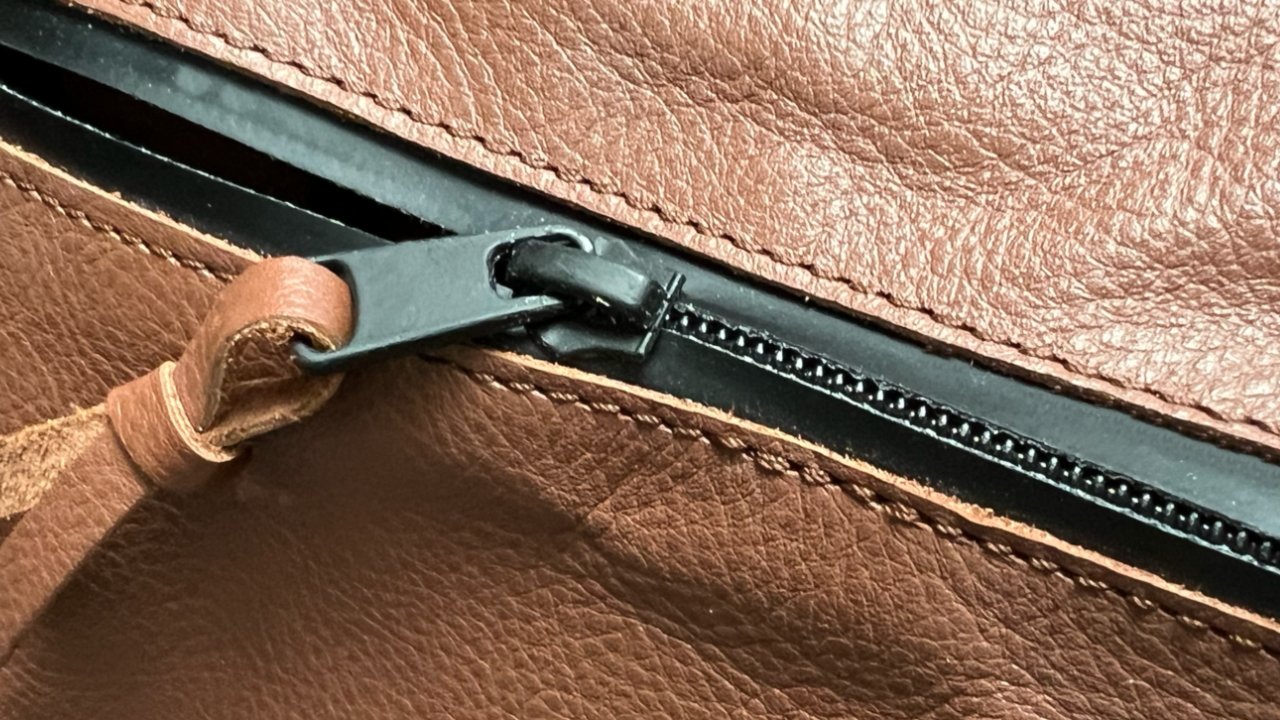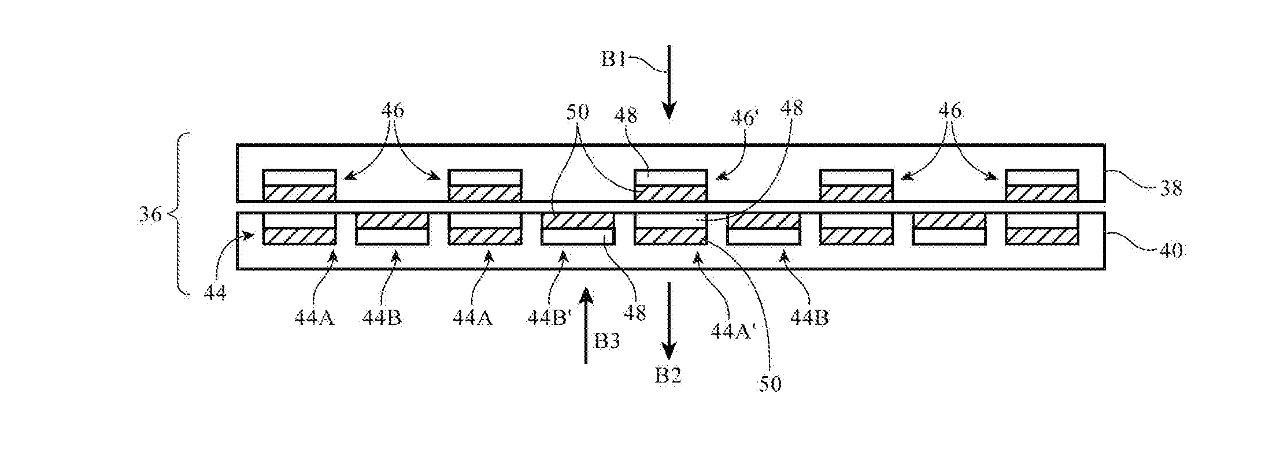Apple researching how to make cases & clothing with magnets instead of zippers
Apple has always gone for the minimalist look in anything it makes, and now new documentation suggests it wants to do away with unsightly zippers, clasps, and fasteners and use magnets instead.

Maybe the closest thing Apple will get to making clothing is the recent "Ted Lasso"merchandise, or health-monitoring gloves. But it's definitely looking at ways to make better bags and accessory cases, and the proposals work for all clothes, too.
The newly-granted patent "Magnetic fastener," is concerned with replacing all zips because they are just too horrible.
"A zipper is opened and closed by moving a slider between two sets of interdigitated teeth," says the patent. "Some fasteners use magnets. For example, a magnetic clasp may be used to secure an opening in a bag. Fasteners may also be formed from snaps and buttons."
You knew that, but you may not have put a stopwatch on how fast it takes to open or close a zip. And unless you're a dressmaker trying to hide all seams, you may not be all that fussed about how a zip looks.
Apple is fussed about all of this.
"Zippers can be unsightly and may be time consuming to open and close," continues the patent. "Clasps such as magnetic clasps may be faster to open and close than zippers, but may not satisfactorily seal large openings."
Don't get Apple started on buttons. Those are sometimes "incapable of forming sufficiently tight seals for openings," and anyway are "even more time consuming to use than zippers."

One of many example patent drawings showing how rows of magnets could act as a fastner
Apple's proposal is to use magnets, and possibly quite a few of them.
"The magnetic fastener may have first and second portions on opposing sides of the seam," continues Apple. "When the magnetic fastener is operated in a closed state, the magnets in the first and second portions attract each other and pull the first and second portions of the fastener together to close the seam."
"When the magnetic fastener is operated in an open state," says Apple, "the magnets in the first and second portions repel each other and push the first and second portions of the fastener apart to open the seam."
In other words, magnets can securely close a seam. But you can also open that seam without too much time-consuming effort.
Maybe we'll never see an Apple cravat, or an Apple frock, with magnetic streams. Quite probably we won't see a catwalk fashion show when Apple returns to live presentations.
And some of this technology is already being used, for instance in the AirPods Max Smart Case.

Not a zip or a clasp in sight
Yet that specific use of magnets to make this kind of bag happens to be addressed in a separate, newly-revealed patent called "Enclosures with flexible magnetic closures and clasps."
There has never been a patent that didn't try to cover every conceivable use of its proposals. And there have been very, very many Apple patents that did not lead to particular products.
But Apple could now do clothing. It could let you say "Hey, Siri, tie my shoelaces," and have the size-adjusting laces snap shut like in "Back to the Future part II."
Read on AppleInsider

Maybe the closest thing Apple will get to making clothing is the recent "Ted Lasso"merchandise, or health-monitoring gloves. But it's definitely looking at ways to make better bags and accessory cases, and the proposals work for all clothes, too.
The newly-granted patent "Magnetic fastener," is concerned with replacing all zips because they are just too horrible.
"A zipper is opened and closed by moving a slider between two sets of interdigitated teeth," says the patent. "Some fasteners use magnets. For example, a magnetic clasp may be used to secure an opening in a bag. Fasteners may also be formed from snaps and buttons."
You knew that, but you may not have put a stopwatch on how fast it takes to open or close a zip. And unless you're a dressmaker trying to hide all seams, you may not be all that fussed about how a zip looks.
Apple is fussed about all of this.
"Zippers can be unsightly and may be time consuming to open and close," continues the patent. "Clasps such as magnetic clasps may be faster to open and close than zippers, but may not satisfactorily seal large openings."
Don't get Apple started on buttons. Those are sometimes "incapable of forming sufficiently tight seals for openings," and anyway are "even more time consuming to use than zippers."

One of many example patent drawings showing how rows of magnets could act as a fastner
Apple's proposal is to use magnets, and possibly quite a few of them.
"The magnetic fastener may have first and second portions on opposing sides of the seam," continues Apple. "When the magnetic fastener is operated in a closed state, the magnets in the first and second portions attract each other and pull the first and second portions of the fastener together to close the seam."
"When the magnetic fastener is operated in an open state," says Apple, "the magnets in the first and second portions repel each other and push the first and second portions of the fastener apart to open the seam."
In other words, magnets can securely close a seam. But you can also open that seam without too much time-consuming effort.
Maybe we'll never see an Apple cravat, or an Apple frock, with magnetic streams. Quite probably we won't see a catwalk fashion show when Apple returns to live presentations.
And some of this technology is already being used, for instance in the AirPods Max Smart Case.

Not a zip or a clasp in sight
Yet that specific use of magnets to make this kind of bag happens to be addressed in a separate, newly-revealed patent called "Enclosures with flexible magnetic closures and clasps."
There has never been a patent that didn't try to cover every conceivable use of its proposals. And there have been very, very many Apple patents that did not lead to particular products.
But Apple could now do clothing. It could let you say "Hey, Siri, tie my shoelaces," and have the size-adjusting laces snap shut like in "Back to the Future part II."
Read on AppleInsider

Comments
Hi freq RF exposure is another thing I LOL to it's claimed non-harmfulness!
The earth generates a huge magnetic field - why does this not harm us? - or maybe it does. On the on the other hand, the magnetic field deflects a lot of harmful solar and cosmic rays.
I’d be interested to see what happens with magnetic closures on clothing when they’re put in a washer or dryer. However, the biggest health threat to putting magnets in clothing is the potential for children to swallow them if the magnets escape from the containment mechanism used to keep them attached to the clothing.
But now I'm wondering what would happen if they did, and if you crossed them.
This could only act as a guide mechanism for initially closing the seam and there would need to be a locking mechanism for strength. The magnets would pull two sides together and possibly overlap, then there could be some retractable pins that extrude into the other layer locking it in place.
It has advantages over a zipper in that it's less prone to wear and tear and for jackets it creates a better wind seal.
Velcro is an alternative that offers a lot of the same advantages - no gaps, better appearance, better seal. There is room for a new fastening technology including for shoes/shoelaces. It needs to be cost-effective, have a scalable component supply and be strong enough to hold against physical exertion.
Some instances could even have some smart technology like security on a rucksack. If it had an electronic locking mechanism people would feel safer leaving it around the beach and tourists would be less inclined to walk around with them on the front of their body. An Apple Watch or iPhone can retract the locking pins.